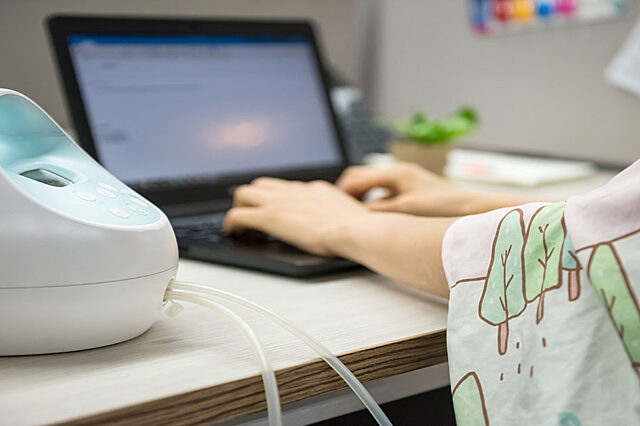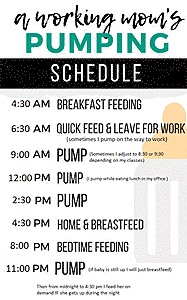Work. Pump. Repeat. – Week 2
Lindsey Bessing, a nurse educator at UF Health Jacksonville, is back as our guide for week two of our blog series, sharing more helpful tips for working moms who want to continue breastfeeding.

Lindsey Bessing, a nurse educator at UF Health Jacksonville, is back as our guide for week two of our blog series, sharing more helpful tips for working moms who want to continue breastfeeding.
6. Figure out exactly how much breast milk you need to store
Many moms can get caught up in filling the whole freezer, but truthfully, you only need enough milk to cover your baby’s needs for the first day back to work. You may be thinking, “What? That’s not enough.” Remember, you’ll be pumping every day at work. The first day back you’ll be pumping for the second day back. The second day back you’ll be pumping for the third day back, and so on. You’ll be sending your care provider with the milk you pumped the day before. There’s really no need to panic if you only have a few ounces of breast milk stashed away. As long as you have enough for that first day, you’re okay.
7. Know how often to pump
Going back to work before your baby is 6 months old requires pumping around every three hours. For example, if you’re away from your baby for 10 hours (eight-hour shift plus the commute back and forth), you should be pumping three times while at work.
Breastfed babies need around one ounce per hour they’re away from mom. If you’re away for 10 hours, you’ll need about 10 ounces (12 ounces to be safe) each day for your baby.
If you schedule a pump break three times a day and need 10 oz. total for tomorrow’s feedings, you’ll need to pump around 3.5 ounces. per pump break. Lindsey typically pumps 5 to 6 ounces per session to build her supply, even though her baby only consumes half that amount.
8. Store your milk properly
Make sure you have a good-sized tote to fit your breast pump, small travel-sized cooler with an ice pack, milk storage bags/bottles and any cleaning tools you’ll need to wash your pump supplies after each pump session.
After each pump session, make sure to transfer your expressed milk into a small bottle or bag with an airtight seal. Once you get home, transfer the three bottles from your cooler to the refrigerator or place the bags into the freezer. Then make sure to clean and dry any parts needed and put your ice pack back in the freezer so it’s ready for tomorrow.
If you have a freezer stash you’d like to rotate through in order to use older breast milk before it goes bad, swap one of the three bottles you just pumped with a freezer stash bag. Pour one of the bottles into a storage bag, date it and throw it in the freezer. Grab the oldest breast milk bag you have in your freezer and place it in the fridge overnight. Transfer it to a bottle the next day and send with your baby.
9. Log it!
Lindsey recommends the Pump Log App, which is free to download for iPhone (Android has several similar options when browsing the Google Play Store). The app helps you keep track of how much milk you currently have on hand and sets a reminder to pump the next time. An example of Lindsey’s schedule from the app is shown below.
10. Hang in there
Breastfeeding is hard. Do not let the talk about how natural and innate it is make you think it’s easy. There will be days or weeks where you will want to give up, and when you go back to work, it is even easier to be extra hard on yourself. If it is something you want and you have a goal in mind, remember that it is possible (body-willing). If for whatever reason, it doesn’t work out and you have to use formula – that is okay too. Donated breastmilk is also an option for babies with prescriptions. Fed is best and your baby will thrive regardless.
Hang in there mama, you were made for this!
Looking for more resources on breastfeeding? Head to our website for more tips from experts. For specific questions, connect with your health care provider or lactation consultant at UF Health Jacksonville.
Lindsey also shares plenty of helpful information on her blog, “Life of the Manic Mama.”
Visit milkbankofflorida.org for more information about the milk donation and pasteurization process.
For questions about retrieving or donating breastmilk at UF Health Jacksonville, call 904-244-2223.
For questions about retrieving or donating breastmilk at UF Health North, call 904-427-6455.
About the author

